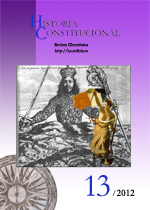La “primavera” de Cádiz: libertad de expresión y opinión pública en el Perú (1810-1815)
DOI:
https://doi.org/10.17811/hc.v0i13.336Parole chiave:
libertad de imprenta, decreto de las Cortes, periodismo en el Perú, censura virreinal, AbascalAbstract
En este artículo se estudia el impacto de la libertad política de la imprenta, decretada por las Cortes generales y extraordinarias en noviembre de 1810, y que se dio a conocer en la Gaceta de Gobierno de Lima cinco meses después. Junto con el antecedente de los pasquines y la prensa ilustrada de fines del siglo XVIII, se examina el contorno de la expedición de ese decreto en las Cortes. A partir de entonces nuevas versiones, inclusive opuestas a las oficiales, lograron ser leídas y discutidas en público, aunque fueran eventualmente censuradas. La libertad de imprenta fomentó la proliferación no sólo de nuevos periódicos, sino también de múltiples folletos, manifiestos y hojas sueltas dedicadas a la defensa de la libertad y la Constitución. Durante el período conocido como la “primavera” de Cádiz aparecieron en el Perú hasta 14 periódicos, de desigual importancia (siendo El Peruano, por su relativa duración y sus planteamientos político-doctrinarios, sin duda el más calificado).
Fecha de envío / Submission Date: 30/04/2012
Fecha de aceptación / Acceptance Date: 12/05/2012Downloads
##submission.downloads##
Fascicolo
Sezione
Licenza
Los autores que publican en "Historia Constitucional" ceden a la revista el derecho de primera publicación, así como la facultad de explotar y usar el texto para ulteriores publicaciones.
Los autores deberán comunicar a la revista ulteriores publicaciones de su texto.


